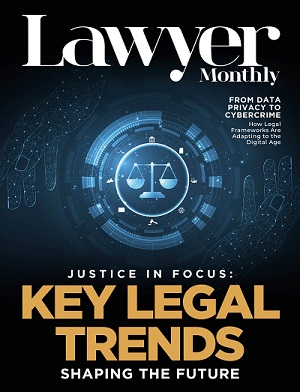With the residence nil rate band (‘RNRB’) to remain frozen until April 2026, now there is all the more reason for you to review your existing wills and explore inheritance tax (‘IHT’) opportunities to maximise the availability of this valuable exemption, Flora Nelmes, Associate at Hunters Law, explains.
What is the RNRB?
The RNRB was introduced back in 2017 to protect the family home from IHT. The RNRB, currently set at a maximum of £175,000 per person, is an additional IHT free amount over and above the standard IHT nil rate band (‘NRB’), which is currently set at £325,000 and also frozen until April 2026.
The potential IHT savings can be significant. The RNRB, together with the standard NRB, gives each individual a potential IHT free allowance of £500,000 (£325,000 + £175,000), or £1 million for a married couple or civil partners.
However, the RNRB is ‘tapered’ at a rate of £1 for every £2 of excess if the overall net value of the estate on death exceeds £2 million. Where the estate is worth £2,250,000 or more, the RNRB is lost completely. For IHT planning purposes, it is worth noting that this value does not take into account lifetime gifts (even if those gifts were made within the last seven years), but does include business and agricultural property.
How to qualify for the RNRB
To qualify for the RNRB, the deceased must have held a qualifying residential interest (‘QRI’) at death or the downsizing provisions must apply.
QRIs
A QRI is broadly an interest in a residential property that has been the deceased’s residence at some point. A QRI does not have to be the deceased’s main residence and could include a variety of less conventional types of homes if they have been used as their residence. Whilst buy-to-let properties cannot qualify as QRIs, a property that was once lived in by the deceased, but has been subsequently let to tenants, can be. Holiday homes – whether in the UK or overseas – could also qualify, provided that they are not ‘excluded property’ and have been used as a residence by the deceased.
Where the deceased owned more than one QRI, only one can qualify and the deceased’s personal representatives must make a nomination. To claim the RNRB, the QRI must be ‘closely inherited’ in that, on the deceased’s death, it passes to any one or more of:
- the deceased’s children (which could include adopted, fostered or stepchildren) or grandchildren;
- the spouses or civil partners of those children or grandchildren; or
- the widows, widowers, surviving civil partners of those children or grandchildren if not remarried at the date of the death of the property owner.
Downsizing provisions
If the deceased has already sold their home or downsized, they may still be able to claim the RNRB if they satisfy the ‘downsizing provisions’. The calculation formula is complex, but in brief, the RNRB will remain available to set against the original higher value of the former QRI provided that higher value is still represented in the deceased’s estate at their death and is closely inherited.
IHT opportunities
Lifetime planning
To increase the chances of qualifying for the RNRB, you could consider:
-
- giving away surplus income to prevent your estate from increasing in value over the £2m threshold;
- for estates close to the £2m level, making gifts of assets (other than QRIs) to reduce your estate to below the taper threshold (where affordable to do so);
- for married couples or civil partners, whose estates are individually worth less than £2m but are together above the threshold:
- ensuring that the benefit of the two RNRBs is obtained by leaving a share of the main residence (or other QRI) to children on the first death; or
- by leaving other assets up to the value of the standard NRB to children or in a discretionary trust on the first death to reduce the amount passing to the surviving spouse to help keep the size of their estate below £2m.
- where the surviving spouse’s estate includes assets eligible for business property or agricultural property relief and their value will take the total estate over £2m, it may be worth considering transferring them into a trust before death.
Trusts
Trusts may be used for several reasons in connection with the home. The types of trust used could have an impact on the availability of the RNRB. To preserve the RNRB, the main condition is that the property is part of the deceased’s estate, and on death, it becomes included in the estate of a direct descendant. Where a parent wishes to leave their property on trust for their children because they are too young, or because they do not want them to inherit outright, the following trusts can ensure that the RNRB is preserved:
- Immediate post-death interest trust;
- Bereaved minor’s trust and 18-25 trust;
- Disabled person’s trust; and
- Bare trust.
Leaving property to children with an age contingency could render the estate ineligible for the RNRB as the gift is not absolute and consideration should be given to restructuring the gift, using one of the trusts above.
Where property is left to a discretionary trust, the RNRB will not be available as the property cannot be ‘closely inherited (even if the only potential beneficiaries are children or grandchildren). This may however be rectified by the trustees making an appointment, as explained below.
Post-death planning
If the RNRB is not available on death, the following action could be taken within two years:
- by beneficiaries under the will, making a deed of variation to redirect the home, or a share of it, to a direct descendant; or
- where the deceased has left their home to a discretionary will trust, by trustees exercising a power of appointment, passing the property to a direct descendant.
In doing so, the direct descendant(s) will be regarded as inheriting the property directly from the deceased for the purposes of IHT and the RNRB.





















